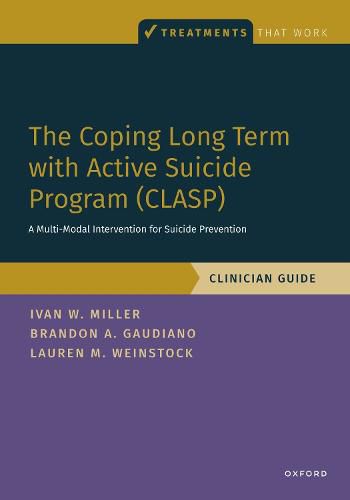Readings Newsletter
Become a Readings Member to make your shopping experience even easier.
Sign in or sign up for free!
You’re not far away from qualifying for FREE standard shipping within Australia
You’ve qualified for FREE standard shipping within Australia
The cart is loading…






Coping Long-Term with Active Suicide Program (CLASP): Clinician Guide is an indispensable resource for clinicians, researchers and mental health practitioners who are interested in implementing a cost-effective and proven suicide prevention intervention, with the newly developed ‘Coping Long Term with Active Suicide Program’ (CLASP). With a foundation grounded in theoretical models of suicide prevention, as well as in the relevant empirical literature, CLASP is unique among suicide prevention interventions in that it targets multiple risk factors for suicide using a combination of formats and therapeutic strategies. The treatment can be delivered in-person and/or via telehealth to focus on values-goals clarification, problem solving, and significant other support. This book introduces the rationale and empirical support for the CLASP intervention, followed by a session-by-session description of how to implement CLASP in clinical practice and with specific targeted populations at risk.
$9.00 standard shipping within Australia
FREE standard shipping within Australia for orders over $100.00
Express & International shipping calculated at checkout
Coping Long-Term with Active Suicide Program (CLASP): Clinician Guide is an indispensable resource for clinicians, researchers and mental health practitioners who are interested in implementing a cost-effective and proven suicide prevention intervention, with the newly developed ‘Coping Long Term with Active Suicide Program’ (CLASP). With a foundation grounded in theoretical models of suicide prevention, as well as in the relevant empirical literature, CLASP is unique among suicide prevention interventions in that it targets multiple risk factors for suicide using a combination of formats and therapeutic strategies. The treatment can be delivered in-person and/or via telehealth to focus on values-goals clarification, problem solving, and significant other support. This book introduces the rationale and empirical support for the CLASP intervention, followed by a session-by-session description of how to implement CLASP in clinical practice and with specific targeted populations at risk.